Pumpkin Puree vs Canned Pumpkin - The Pumpkin Pie Challenge
Fresh pumpkin puree and canned pumpkin face off in a blind taste test. Which was the winner?
Every year as the temperature drops and pumpkin season rolls around, I can’t resist buying fresh pumpkin and making homemade pumpkin puree. Then I came across some articles saying that canned pumpkin is in fact better than fresh pumpkin puree. Have I been wasting my time making fresh pumpkin puree? When I make a pumpkin pie for my family, I want it to be the BEST. And I certainly wouldn’t go through the extra trouble for an inferior outcome. I decided to do my own test. Read along and see what I discovered.
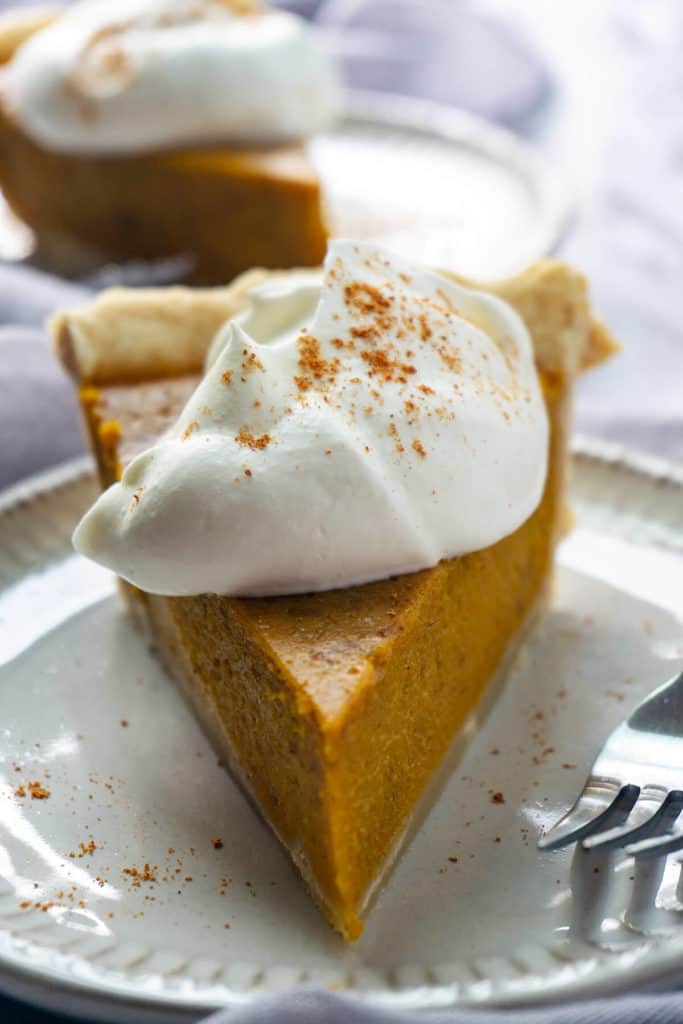 I started with a little research. I did find some differing opinions, some saying that fresh homemade puree tastes better, has a better texture, and makes a better pumpkin pie. Others think that canned pumpkin is superior.
I started with a little research. I did find some differing opinions, some saying that fresh homemade puree tastes better, has a better texture, and makes a better pumpkin pie. Others think that canned pumpkin is superior.
I was relieved to find some of my favorite, trusted sources in the fresh puree camp. Cook’s Illustrated, in a comparison of canned vs. fresh puree found that when used in pumpkin bread, tasters found the fresh puree a bit more vegetal and less sweet, though definitely acceptable. “In pumpkin pie, tasters preferred the fresh to canned. Though its more subdued orange hue made some hesitate, they observed that the fresh pumpkin contributed a pleasant squash flavor, compared with the pie made with canned, which tasted predominantly of the spices added to the pie.”
The brilliant cooks over at Serious Eats concurred. “Homemade pumpkin puree has a better taste, texture, color, and aroma than pumpkin puree from a can.”
Several other bloggers are fans of fresh puree. The Pioneer Woman says that fresh puree makes “the most delicious pumpkin pie I’ve ever tasted.”
Joanne, the talented blogger over at Fifteen Spatulas, did a blind taste test comparing canned vs. fresh puree from a sugar or pie pumpkin. Her results: the canned puree had a weird, off-putting taste before being cooked and still had a strong and unappetizing taste after being baked in a pie. The texture, she found, was the biggest difference. The canned pumpkin had a cottage cheese/ricotta texture, while the fresh puree had a thick, velvety texture.
So what about those who prefer canned pumpkin?
The most common argument in favor of canned pumpkin is convenience. While this is undoubtedly true, and convenience can be the difference between having a homemade pie on the Thanksgiving table or a store bought one, my focus is on which gives better results.
One blogger compared fresh and canned puree and found that, “The canned pumpkin pie tasted better. The spices seemed more pronounced, especially the cloves, and the pie made with the canned pumpkin was said to have a ‘stronger pumpkin aftertaste’ and to be ‘more flavorful.’” This blogger found the texture of the fresh puree to be superior, but didn’t think that would outweigh the better flavor of the canned.
Another blogger pointed out that while she uses both fresh and canned, canned pumpkin is consistent in flavor and texture, making it more foolproof to use in recipes. She finds that pumpkins vary widely in flavor, and homemade puree doesn’t always turn out to be as flavorful as canned. Interestingly, one of her commenters, another food blogger, found Libby’s canned pumpkin to be paler and thinner than usual that year, giving her trusted recipe a heavy, gummy texture. She noted that in Illinois, where Libby’s grows its pumpkins, it was wetter than ideal in the early part of that season, affecting the pumpkin crop.
These were very valid arguments and worth taking into consideration. Taste is, after all, a very personal preference. And consistency is definitely a concern.
Another large website, Taste of Home, is also in the camp of those who prefer canned pumpkin. They assert that even professional cooks testify that canned pumpkin is superior to fresh puree for cooking. Their first argument is convenience, with making fresh pumpkin puree a grueling, tedious task that takes up to two hours. Another argument is consistency in moisture and sweetness and the guessing game one would have to play to get the texture of the fresh puree just right. Their third argument is the type of pumpkin – or squash actually – that Libby’s uses. Libby’s has developed their own variety to be ideal for baking. Their final argument is that canned puree is available year round.
These are all good arguments. I use lots of cans of pumpkin every year and it is more convenient and available year round. However, the question I’m trying to answer is when pumpkin season rolls around and I’m inclined for whatever reason to make a pumpkin pie from homemade puree, which makes the better pie? The texture issue is definitely a concern. Cook’s Illustrated gives a great technique to make sure pumpkin puree is the perfect consistency. The final argument – the type of pumpkin (or squash) – might hold the key to my answer. More on that later.
I didn’t intend to wade into controversy when I started my search. I just wanted to know if I was wasting my time making pumpkin puree from scratch. I’m a great fan of Libby’s. They have been a part of my family’s holiday celebrations and well-loved seasonal baking for as long as I can remember. My family’s go-to pumpkin pie recipe is found on the back of their can.
But I did find a pretty strong opinion from a writer over at Forbes who jumped into the debate with their claim that you want canned pumpkin for a better pie, not fresh. This article asserts that it is a “big waste of time” baking a pie with the “watery mush” that is fresh pumpkin puree. For those who have “thankfully only conceived of the notion” of baking a pie with fresh puree, this article hopes to “convince you of its foolhardiness.” The author seems to be referring to making a pie out of a Jack-O'-Lantern Halloween pumpkin, which true, would not make the best pie. She also warns not to be fooled by the deceptively titled Sugar or Pie pumpkins, which she finds herbaceous in flavor with a fibrous texture that results in a grainy puree. The main argument in favor of canned pumpkin: the variety of pumpkin. Libby’s pumpkin, she details, a proprietary variation of the Dickinson pumpkin, is in fact a variety of squash similar to butternut squash in appearance, taste, and texture. Its puree is “luscious, creamy, and naturally sweet- much like butternut squash.” (Much like butternut squash? Hmmmm……)
So there you have it. Opinions ranging the whole spectrum from “The most delicious pumpkin pie I’ve ever tasted,” to baking with “watery mush” is a “big waste of time” and a “foolhardy notion.”
The only thing left was to experiment and test it myself. Which I did, in a blind taste test. I made fresh pumpkin puree with 3 different kinds of pumpkin/squash. Using those purees and a can of Libby's pumpkin, I baked 4 pumpkin pies using the same recipe at the same time. They were then tested, blindly and side by side.
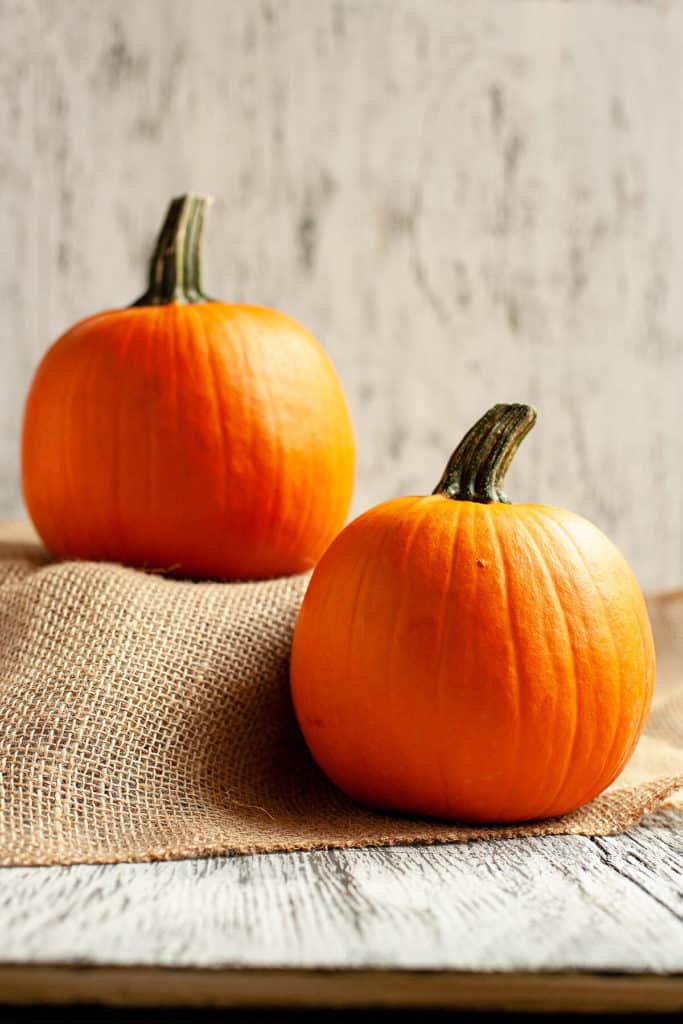
One question I had as I read through the comparisons of canned vs. fresh was if Libby’s uses a type of squash, why does the comparison have to be against a pumpkin? Isn’t that like comparing apples and oranges? Kind of. But not quite. Since squash is the general term for the fruits that belong to the genus Cucurbita, and since pumpkin is from the genus Cucurbita, you can say that a pumpkin is just a kind of squash. So it’s more like comparing different varieties of apples. But different varieties have different textures, flavors, and levels of moisture and sweetness. If the Dickinson pumpkin is so similar to the butternut squash, why isn’t this being tested against the canned puree? Knowing this, I chose three different varieties from my local supermarket: sugar or pie pumpkin, kabocha squash, and butternut squash.
The sugar (or pie) pumpkin is one of the most popular types of squash for making pumpkin pie. It’s small – about 2-3 pounds and 7-8 inches in diameter - and readily available in the fall in most supermarkets. While it’s the most popular, it may not necessarily be the best for fresh puree and pie. It’s not as deep in flavor as some other types of squash and has a watery texture.
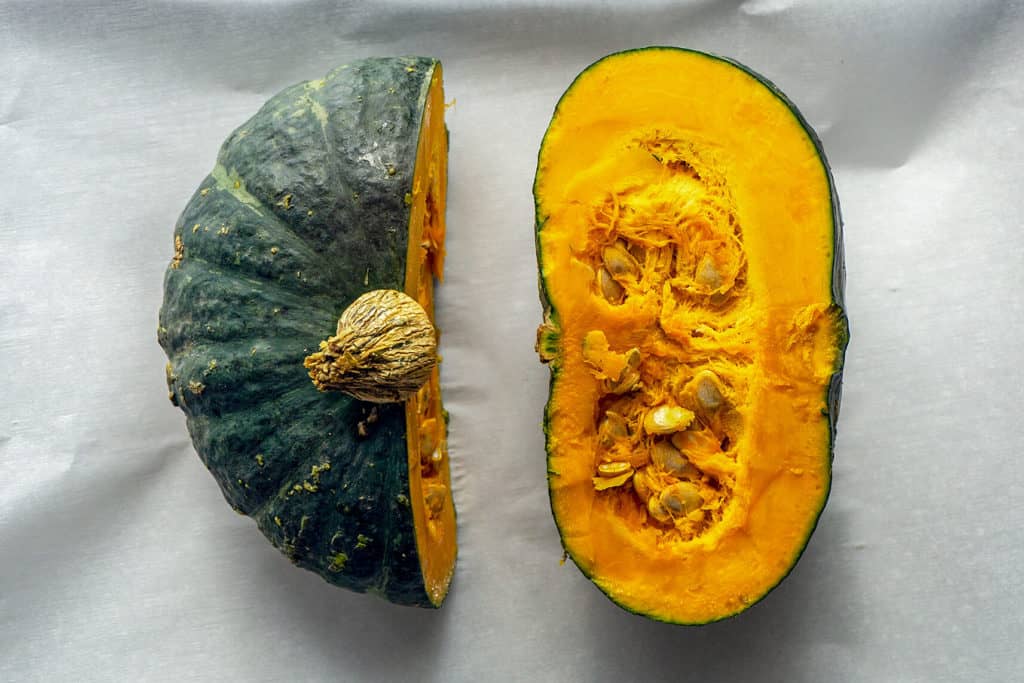
Kabocha squash is a Japanese pumpkin with a beautiful color, a sweet flavor, and a lovely, fluffy texture. It makes a silky, rich, velvety smooth filling for pumpkin pie.
Butternut squash, similar in appearance, flavor, and texture to Libby’s Dickinson squash, has a sweet flavor, bright orange color, and makes a dense and luscious filling for pie.
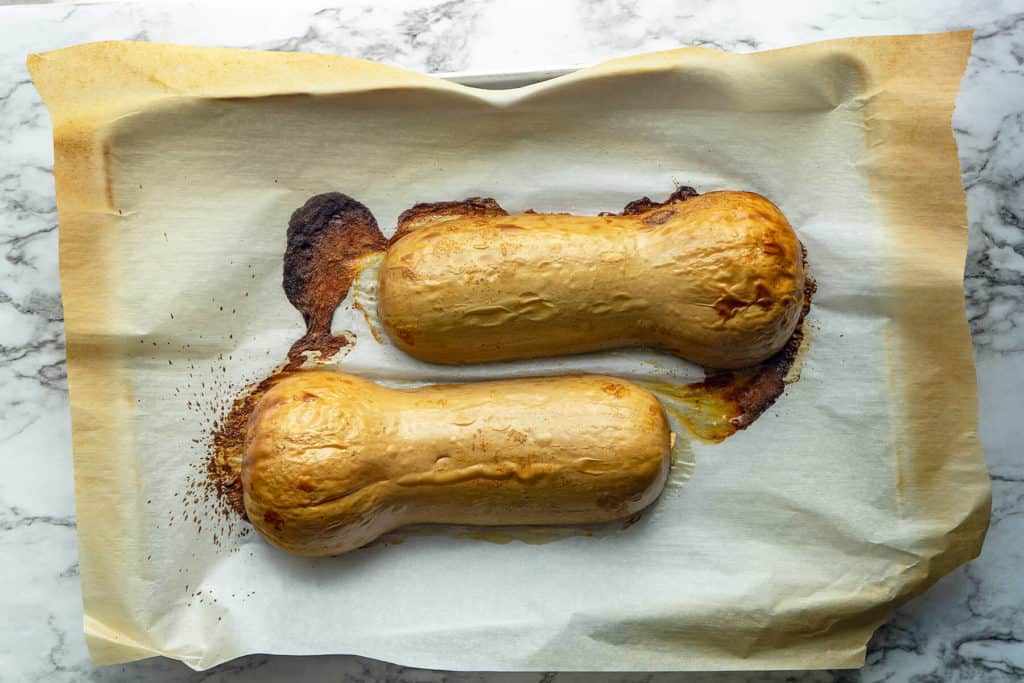
First I roasted the three pumpkins/squashes. Roasting deepens and sweetens the flavor, draws out moisture, and has an almost caramelizing effect. Then I cooled them and made a puree. Already you could see a difference. The sugar (or pie) pumpkin was lighter in color and more watery. The Kabocha and butternut squash were a lovely, intense orange color with a smooth, dense, velvety texture. The canned puree was darker in color and while thicker than the sugar pumpkin, it was not as smooth and dense as the kabocha or butternut squash.
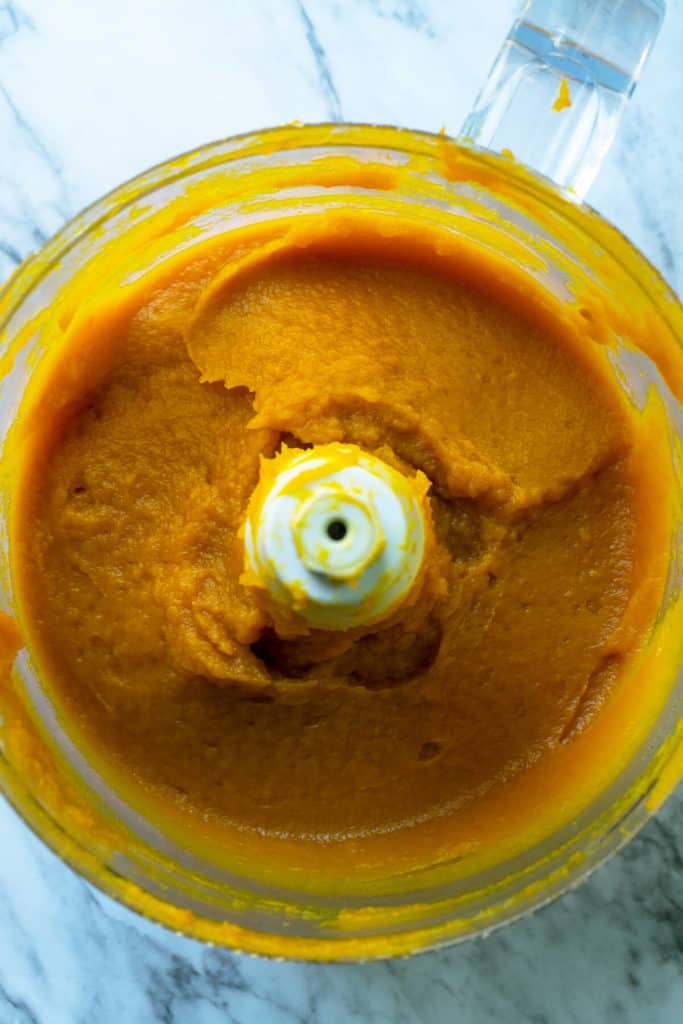
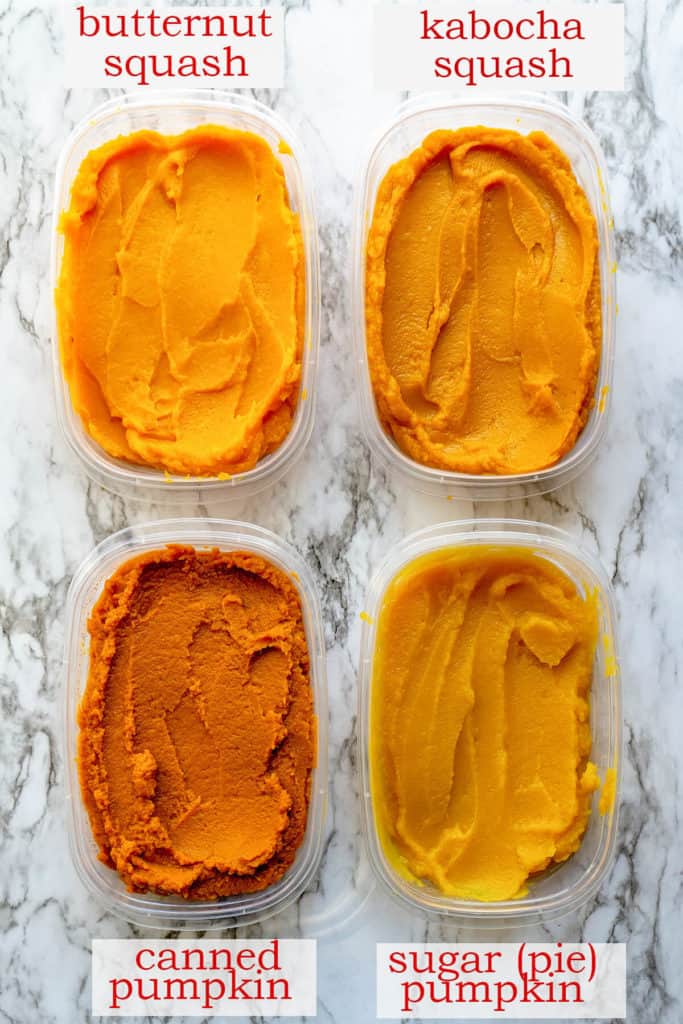
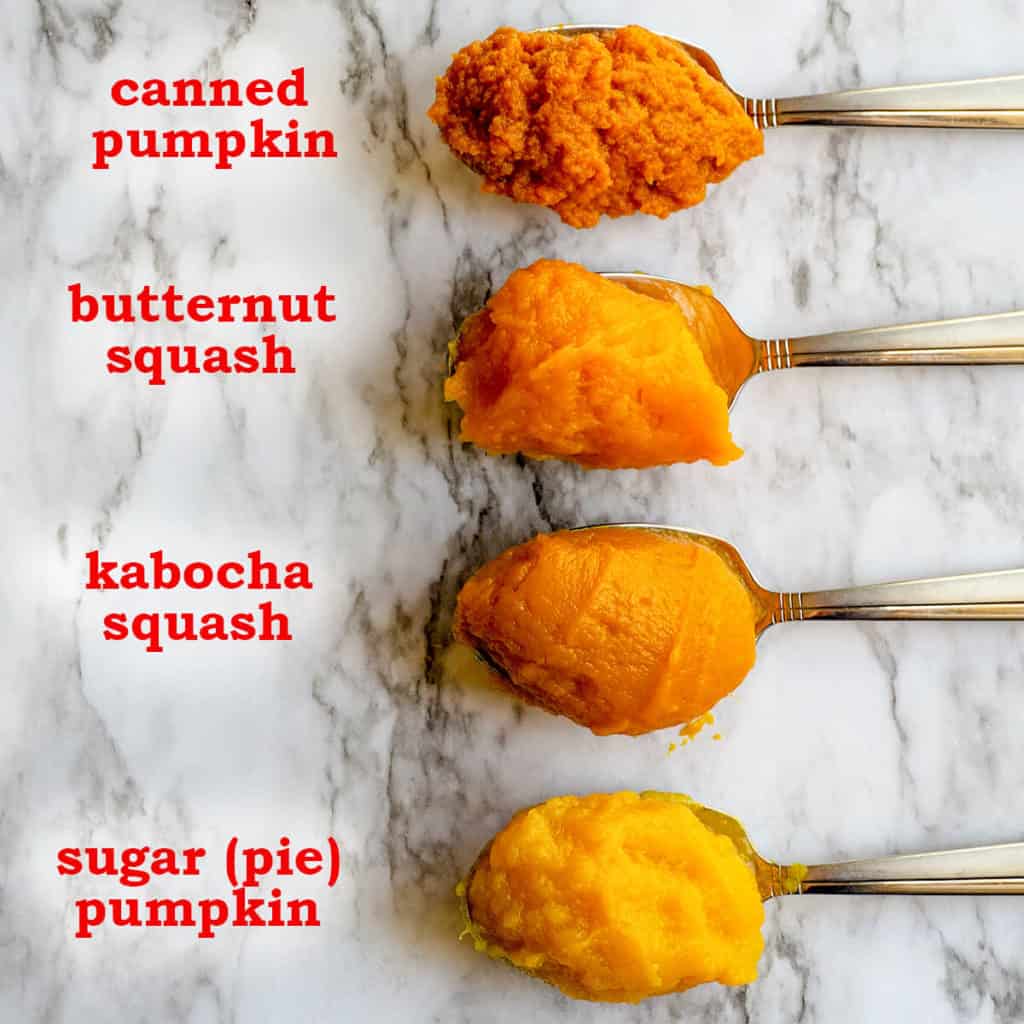
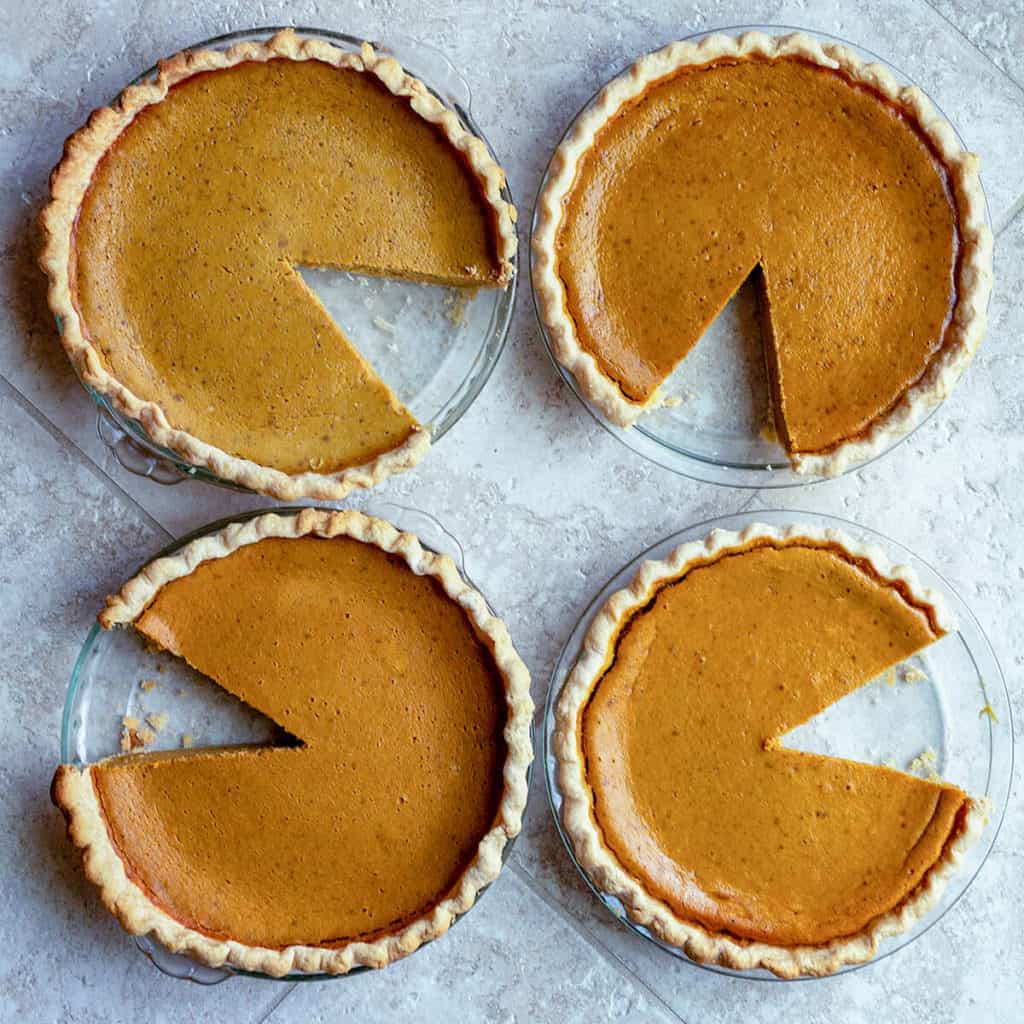
The kabocha and butternut squash pies were clearly the winner here, in taste and texture. They tasted exactly how a perfect pumpkin pie should taste – sweet, deep, rich, and pumpkin-y. What was really amazing was their texture. They were both silky smooth, dense, creamy, rich, and velvety. The mouthfeel on these two pies was outstanding and something I hadn’t experienced with canned pumpkin before.
The sugar pumpkin pie was smoother than the canned pumpkin. However the taste testers preferred the taste of the canned pumpkin pie better. I personally think that between the pie spices and the whipped cream, texture trumps taste, but once again, it’s only personal opinion.
Reading through blog posts, many commenters were in favor of fresh pumpkin puree. Interestingly, the most enthusiastic were those who used a different type of pumpkin that they had good results with. The three types of pumpkin I used were readily available at my local supermarket. However, check out your local farm stand and ask which variety is preferred for the best pumpkin pie.

Which do you prefer, fresh pumpkin puree or canned pumpkin?
I'd love to hear what your favorite pumpkins/squash are for the best pumpkin pie. Leave a comment below!
Check out my step by step tutorial on how to make Homemade Pumpkin Puree!


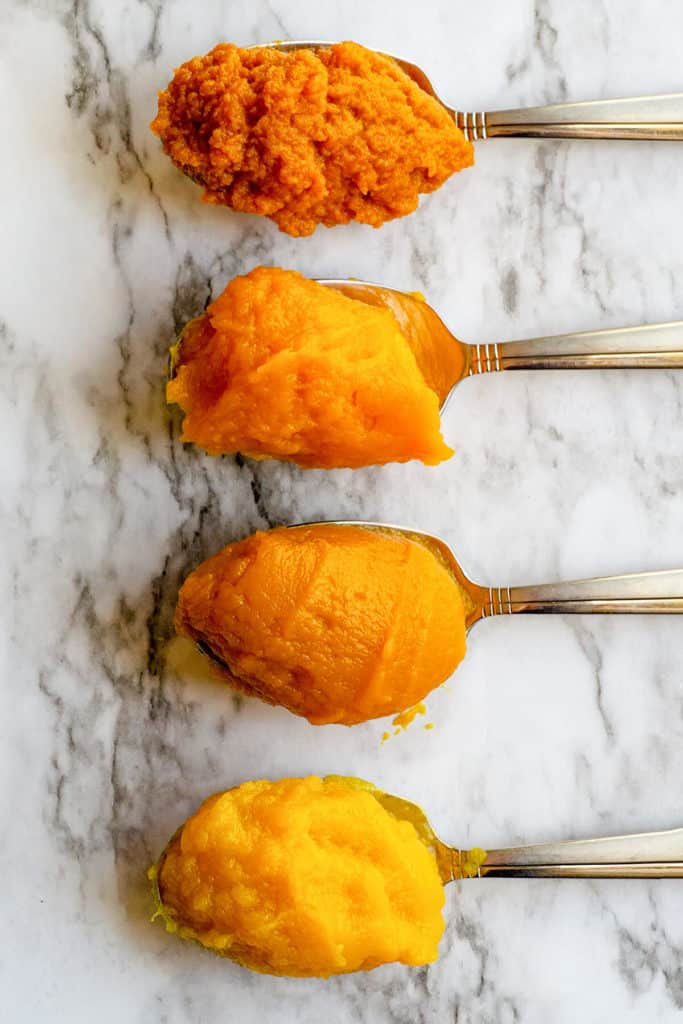
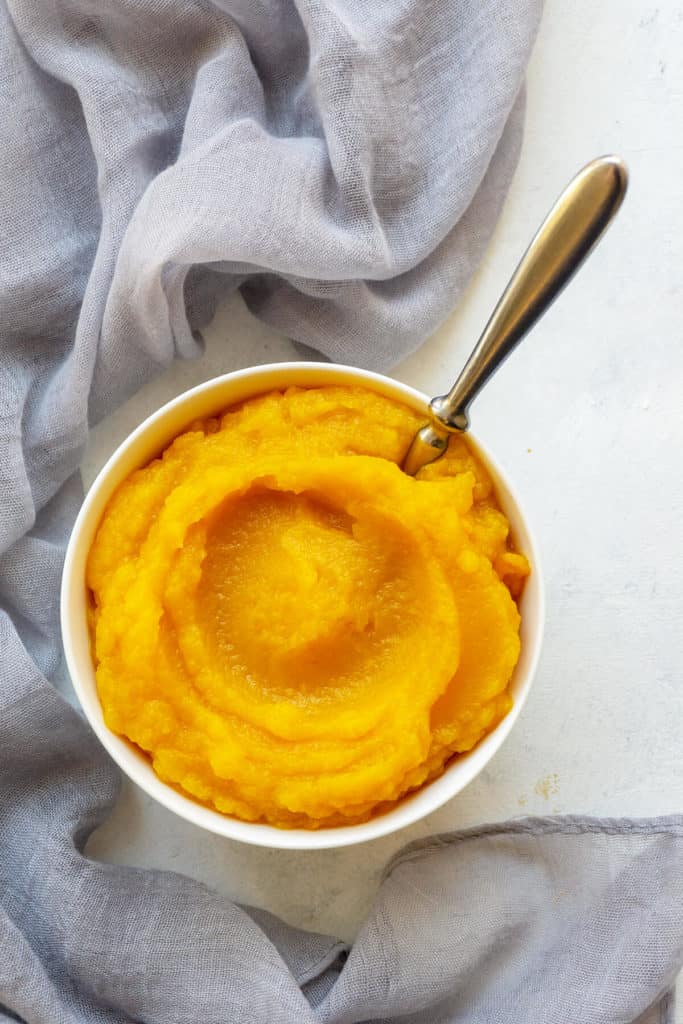
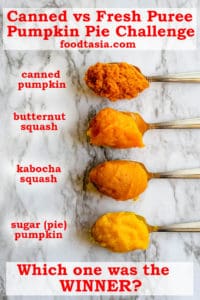
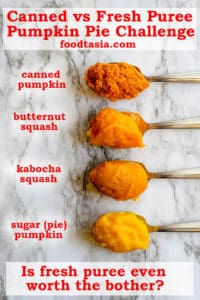
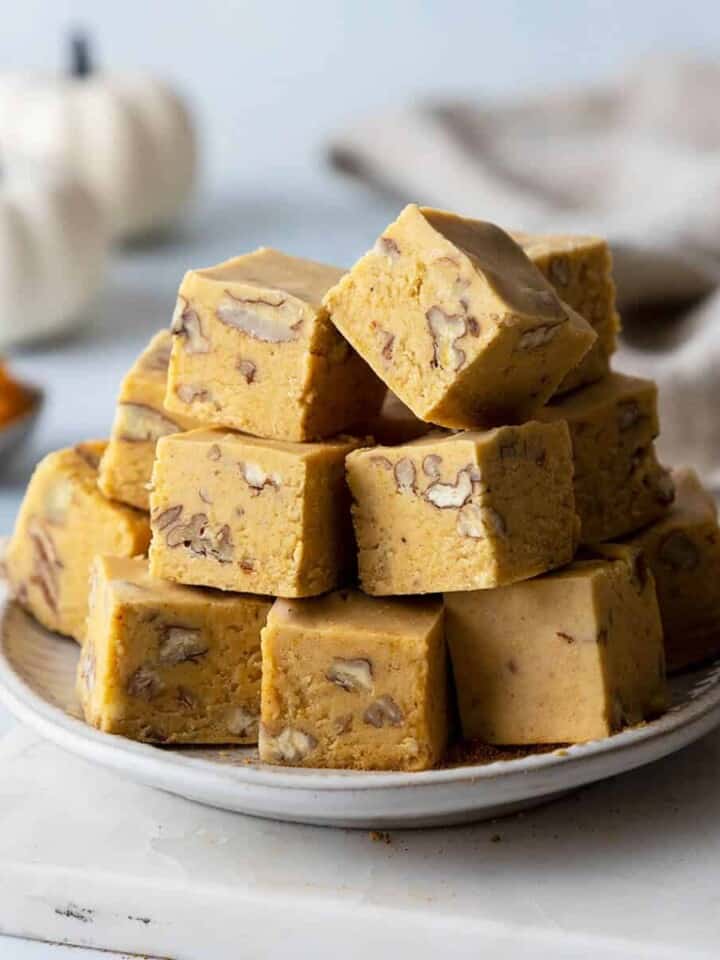

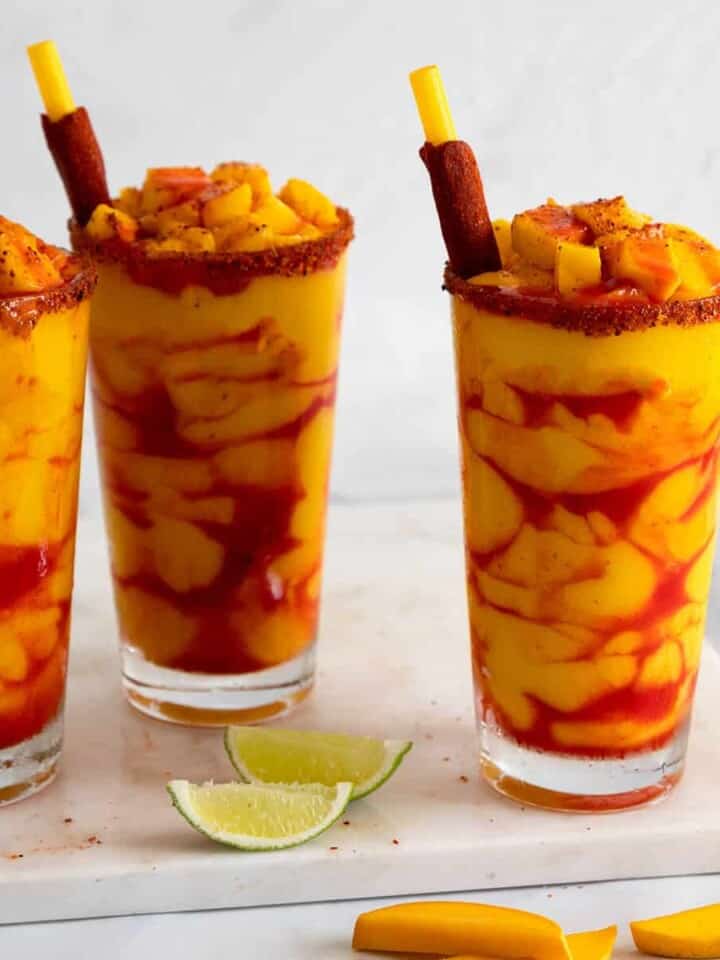

Nathan Harvey
Years ago, I decided that I wanted to grow giant pumpkins, but when I found out that you needed at least a 30'x30' space for one plant, and my whole garden was 20'x20', I looked for alternatives. At the same time, I was reading all of Ruth Stout's books and gathering tons of bagged leaves on my way home from work so that I could mulch garden like her, and learned that her favorite squash for baking was the Blue Hubbard. This seemed like the answer to my desire for giant squash, as she had grown a 54 pounder one year! I've grown it, and made pies from it, every year, and they are excellent. My biggest one is only 23 pounds though, although I grew a total of 84 pounds of them on my vine this year! Maybe next year I'll knock off all but the biggest and beat Ruth's record.
Due to articles like this one, I also grew Red Kuri and Honeynut this year, made a pie from each and my wife and I had a taste test. The Blue Hubbard still won. Honeynut was prettiest but the flavor was too potent (but might have been best in a straight pumpkin pie without all other sweeteners- we actually prefer to use the "Sweet Potato and Pecan Pie with Cinnamon Cream" recipe from oprah.com with squash puree substituted for the sweet potato), Red Kuri was almost too citrusy, but maybe my spoonful of zest was more rounded than for the others. All were tremendous, though!
Each article seems to put forth a different champion. As you pointed out, weather that year and how they were grown can make a difference too. To paraphrase what Eliot Coleman wrote in one of his books, he finds that most varieties are superior when grown in his well composted and amended organic soil.
Just read "The Perfect Pumpkin" by Gail Damerow, her discussion of "culinary pumpkins" have me thinking about growing "Winter Luxury", "Long Island Cheese Pumpkin", "Rouge Vif D'etampes" and Abe Lincoln's favorite "Illinois Squash" (or White Crookneck pumpkin, doesn't look like a pumpkin at all). I'm at a different house with 4 different gardening areas, but still make room for all of these vines by planting 4 around an enclosed "Japanese Tomato Ring" type compost pile and just winding the vines around the circle, then turning them loose up an embankment. I give away what I don't need at the school where I work, lots of good will.
Nice article!
Kelly
Well, Nathan, you've certainly got me dreaming about planting pumpkins next spring! The Japanese Tomato Ring is a pretty fascinating idea, I'll have to do some reading up on that. Thanks so much for sharing, I'll give the Blue Hubbard squash a try!
Emily
This is an awesome review! It seems like most bloggers are split on the subject. I always use fresh! I hate canned pumpkin pie. I’ve tried it many time over the years and I always hate it. But living in IL, I made my own recipe using fresh (like, I picked it out of the field fresh) pie pumpkin. I add a little bit of stability to the fresh pumpkin with flour (or cornstarch) because it is watery. That’s where most of the fresh recipes I’ve found are lacking. I also add just a touch of maple syrup!
Kelly
Wow, that's fresh! Since I actually tasted the pumpkin straight from the can, I've used a lot less of it. I roast a couple of pumpkins or squash at the same time and freeze the puree in 15oz portions which makes it really convenient to use. Thanks so much for your comment, Emily!
Ammon Fawson
After reading through the other posts, two things that we have tried that were not mentioned here are first, using a sweet meat squash, and second, using yams blended with squash to make the pie. I'm not sure where sweetmeat falls as a squash variant, but it does seem similar to your Japanese variety. Using cooked Garnet yams does seem to have a positive impact on balancing moisturizer increasing fluff in the pie. Maybe some things to experiment with in 2020!
Kelly
Thanks so much for the ideas, Ammon! I make a Cook's Illustrated pumpkin pie that includes canned yams that's pretty good. I'll definitely try the Garnet yams and Sweet Meat squash and see how it goes!
Lisa Byrd
I'm sorry. I didn't intend to leave such a long post. But I have strong opinions about how food is preserved & made. So if someone says to me "It's too much work, just use canned" I think about things that companies do to make what they sell, how they process the food and what they add to it before they seal up all those cans. How often do we hear about something that's been on the market for years but now "they've" found that it contains, such & such which can cause cancer, etc.? Again, I apologize for the length my previous post.
Kelly
Lisa, thanks so much for your comments and I couldn't agree with you more! If you want the best tasting pie, then a few extra steps is worth the effort. Getting the extra moisture out of the puree is easy enough either by straining or simmering in a saucepan. Your tip about freezing the puree in a quart sized bag, flattened out is perfect. That's exactly how I do it. It doesn't take up much space in the freezer that way.
I also agree with you on having control over what goes into our food. Who knows what's been added or what nutrients have been lost through the canning process. Even tasting the puree out of the can (and comparing it to the taste of fresh puree) lets you know something is off.
I'm very happy to hear from you, Lisa, and thanks so much for taking the time to comment!
Lisa Byrd
There is a pumpkin pie baking in my oven as I write this. It is made with fresh puree from pie pumpkins. I stopped using canned puree many years ago when I discovered Libby's doesn't use traditional pumpkins in their puree.
It's true that puree from pie pumpkins can be watery. To correct this issue, I puree the pumpkin after roasting then put the puree into a sieve (resting on a bowl), then cover it all in plastic wrap. I place the whole contraption into my refrigerator for about 24 hours to let excess water drain off.
For my particular recipe I need 2C. puree. I freeze the puree in 2 or 4C. portions for 1 or 2 pies, respectively. I freeze the puree in round containers saved from takeout. Once frozen solid, I remove the puree from those containers, place them in food saver bags, seal and put them back in the freezer.
When I feel the need for a pumpkin pie, I thaw the frozen puree (counter or refrigerator, doesn't matter. If the puree still looks a little watery after it thaws, I stir it in a saucepan over med. to med. high heat until it looks dry and carmelizes.
I realize this sounds like a lot of work for fresh pureed pumpkin. But it really isn't if you plan ahead. Fresh frozen puree lasts a long time in the freezer. I realize not every one has a food saver. But I'd bet quart sized freezer bags work just as well. Flatten the bags and push as much air out as you possibly can.
I haven't been well for the last couple of years. Baking pies has not been on my priority list. But I'm feeling better and was thinking about pumpkin pie. I went to the freezer for some puree. I wasn't sure if it was any good. I was afraid it might be freezer burned. It looked ok after thawing, so I used it. Pie is cooling now.
Puree was frozen more than 2 years ago.
Carolyn McKenzie
I have been roasting pumpkins to puree for pies for years and have never found the puree to be "watery." I did get a chuckle,though, from a dear friend who was peeling, cutting into chunks and BOILING the pumpkin. Yes, her puree WAS watery! Anyway, perhaps my family is less discerning ... we are hardly gourmets...but they hands-down prefer the fresh. And to the "canned is available year round": roasted puree freezes just fine. We has 14 big pumpkins in our garden this fall and our freezer has enough for pumpkin pie every week till NEXT fsll.
Kelly
Wow, Carolyn! That is quite the stash! Homemade roasted pumpkin puree is so much more tasty than canned. And roasting is so easy. I wouldn't have the patience to cut and peel pumpkins! Thanks so much for taking time to comment!
Andrea Hoffman
I love "pumpkin" pie. In quotes because I rarely use actual pumpkins. Those are reserved for soup and stir fry. My go to is Hubbard squash. In comparison to your tests I'd rate it most like the Kabocha there's just a lot more of it as they average 15lbs of useable flesh that's perfect for canning your own pie filling. I use Libbys for my breakfast cookies which are always a winner.
Kelly
Thanks so much for your comment, Andrea! I'll have to give the Hubbard squash a try!
Juli Hurley
Thank you for such an in-depth comparison. I have used, both, canned pumpkin as well as fresh. One tip I’ll give about using fresh purée is to cook off some of the excess liquid before using the purée in recipes. I do that in an open crock pot when I want to make lots of purée for storage.
I’m also a start-up pie business and will offer pumpkin pie for Thanksgiving and Christmas. I’m trying to decide which method to use. I’d rather use fresh squash filling but may need to resort to canned if that is all time allows. Something to think about...
Kelly
Juli, great idea on using the crock pot to cook off any excess liquid. Thanks for sharing! I had always wondered which puree was better. It took quite some time and quite a few pies, but there's no better way to know for sure than a side by side comparison. Although we did have to eat a LOT of pumpkin pie! Thanks so much, Juli, for taking the time to comment!
Lee ebler
I've been using butternut squash for years. I do a turkey roaster full (never thought of roasting!). And freeze. The trick seems to be getting the juice extracted. The pie i make is smooth, a slightly heavier, denser texture, and because we don't like cloves, the flavor comes from salt, vanilla, a dash of cinnamon and extra butter and brown sugar. I've used both cream and canned milk. This makes a very moist "pumpkin" bread. After Christmas, i'll sort my stored butternut squash and make more into puree. Some squash will last a year.
Kelly
Butternut squash is definitely something I would want to eat all year long. I find that roasting is a good way of getting out excess moisture. I've been experimenting with roasting them cut side up vs. cut side down to see which gave a better result. Sugar pumpkins release so much liquid that cut side down is better so that the liquid can run off. Butternut squash has much less moisture in it so it's nice and thick and starts to caramelize in the oven. Thanks so much for stopping by, Lee!
Drusilla
I have never tried making fresh pumpkin puree until after Thanksgiving this year. I went to their wesite: Libby's canned Pumpkin Puree and their video showed the processing which I found very interesting and informative. The pumpkins are washed seeded and peeled. Then they are mashed and filled into tin cans sealed and cooked in the can. When cool the labels are placed. I was turned off by the canning process because of the heat and cooking in cans. For sure I will make my pumpkin recipes from fresh pumpkins aor the puree I have prepared and placed in my food saver bags to freeze.
Kelly
Canned pumpkin has a bit of an off taste. I always figured it was from the can. So cool that you found the video of the process! Thanks for sharing, Drusilla!
Ron
Like when you moved to Dubai, I soon learn after moving here that There was no" Libby's on the Label" products. Then to further frustrate me, we had no decent baking squash. But, in the last year or two we've started getting nice winter squash. So, this is very interesting to me as I'm planning on making a pumpkin pie this year.
Kelly
We were lucky in Dubai to get fresh pumpkin/squash imported from around the world. Because of the big international community there and the fact that most food is imported, there's such a variety of fresh produce to be found. Thanks so much, Ron!
sherry
fascinating isn't it how different kinds of things can be so different? as you say apples ain't always apples.:) Here is australia, pumpkin pie is not really something we see much of. it is mostly used as a vegetable here. i like to make a vegie lasagne with pumpkin puree, and as it is not readily available in cans, we have to make our own. so yes roasting it first then zapping it is the way to go. thanks for the experiments. an interesting read. cheers sherry
Laura
Nice experiment, Kelly! I’ve always heard, (and doubted) that canned was tastier. I’m surprised the squashes turned out better than sugar pumpkin, I’ve always heard that one was best. But a lot to think about here. I may just give the butternut a try!
Kelly
I was a little surprised, too. Especially since the sugar pumpkin is the one most commonly used. The fact that Libby's pumpkin is actually a squash similar to butternut squash was the real clue though. Let me know how it turns out if you try it. Thanks for stopping by, Laura!
Leanne | Crumb Top Baking
This is such helpful information Kelly! I love that you took the time to be so thorough in your testing. I've always bought canned pumpkin out of convenience. But after reading this I would love to try to make my own. Thanks for sharing!
Kelly
Thanks so much, Leanne! I use cans a lot as well. Living overseas for some years, I couldn't find canned pumpkin and had to make fresh puree if we wanted pumpkin pie. It was always delicious. It was a lot of fun (and work) tasting the pies side by side. That's when the differences really stand out.
Mimi
What a brilliant experiment! Really fascinating. I used to use canned pumpkin only, but for quite a few years since I discovered pumpkin purée packaged in aseptic cartons (similar to how silken tofu is sold) that’s what I now use. It’s distinctly less watery.
Kelly
Thanks so much, Mimi! I found it very fascinating! It was a lot of work but very enlightening to taste the pies side by side 🙂